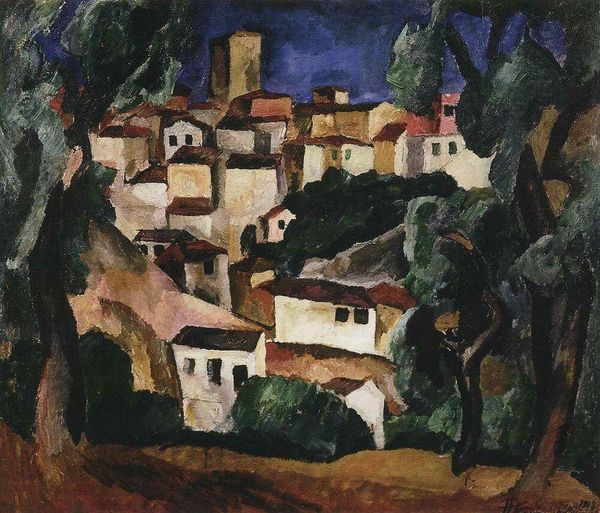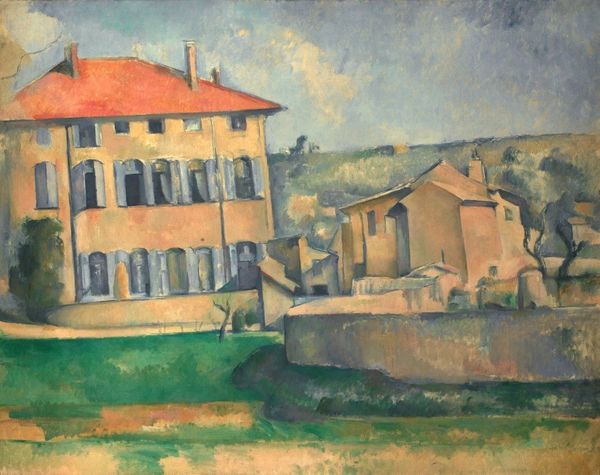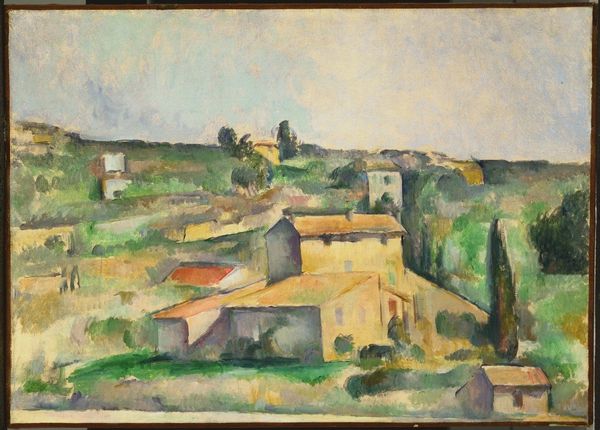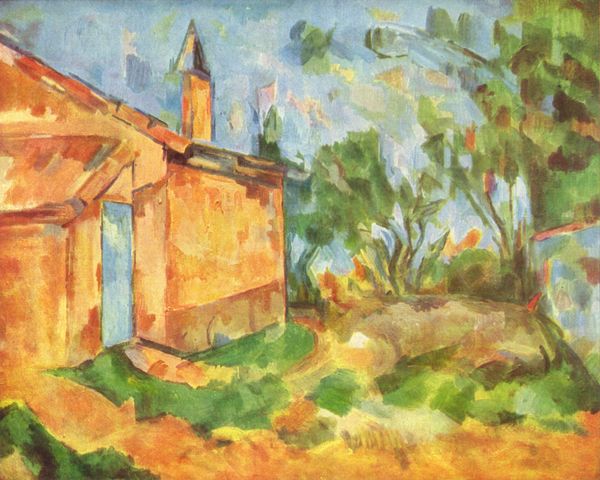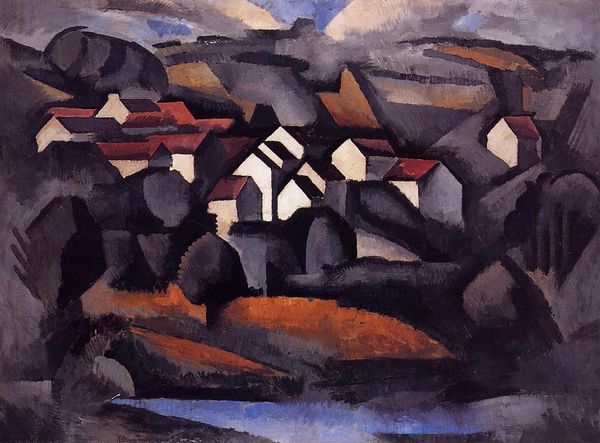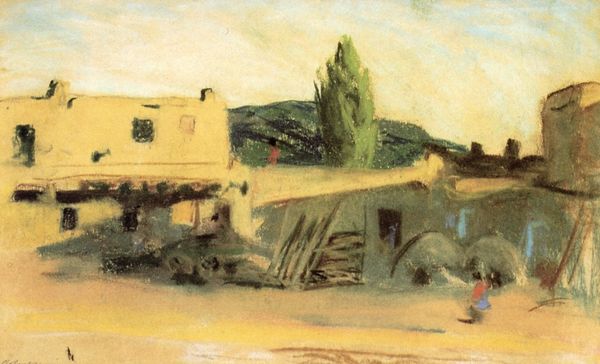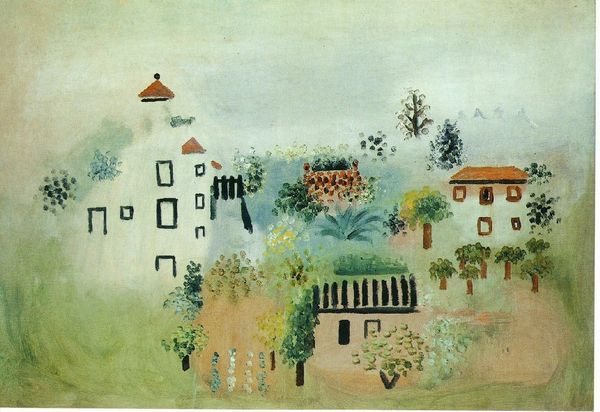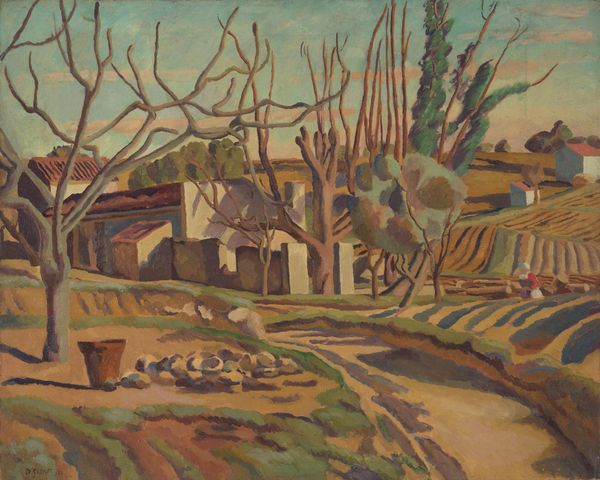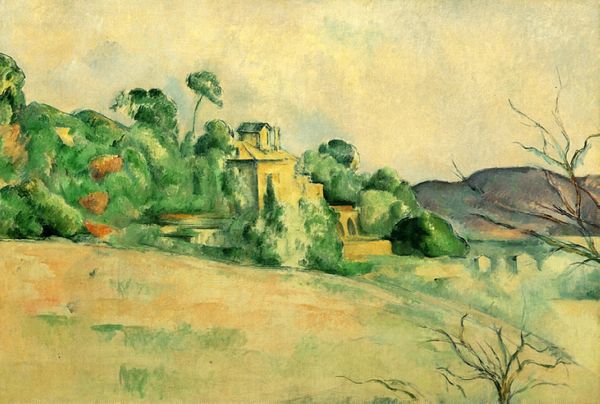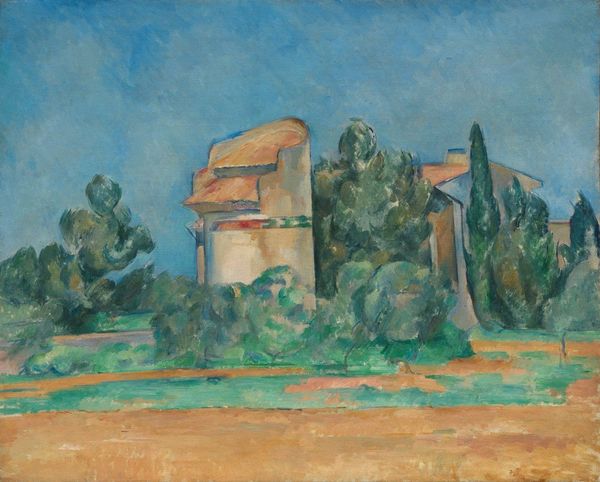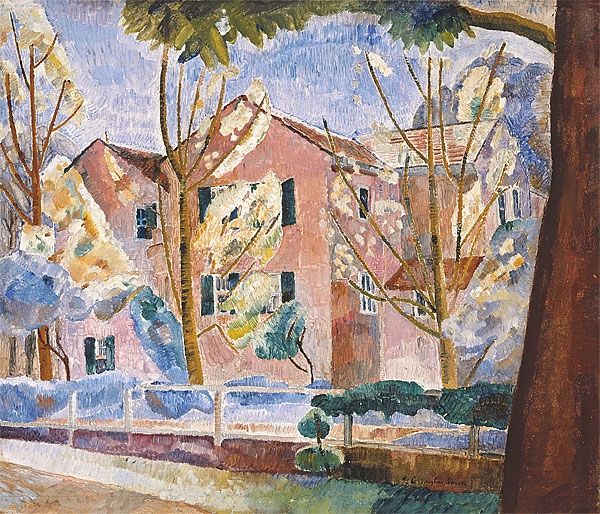
Copyright: Public domain US
Editor: We're looking at Robert Falk’s "Yard in Crimea," painted in 1916. It’s an oil painting, full of impasto texture. I’m immediately struck by the way the buildings seem both solid and slightly…unreal. The colours are earthy, but the composition feels almost dreamlike. What stands out to you? Curator: That’s a delicious observation! You’re right, there's a palpable tension. Falk, amidst the tumultuous Russian Avant-Garde, wasn't interested in mere representation. Instead, the artist embraced subjective experience. For instance, how does the roughness of the impasto contrast with your ideas of what a vacation is supposed to feel like? Editor: It's kind of jarring! You expect a relaxed, sunny vibe, but the texture feels almost…anxious. Maybe reflecting the pre-revolution unrest? Curator: Exactly! Falk plays with these tensions. The solidity of the buildings offers comfort, but the broken brushstrokes hints at instability. There's almost a Fauvist-like use of color that expresses a subjective mood, and the composition offers some of the flattened perspective often found in Cubism, both radical ideas during that time period.. It is both present and ephemeral, serene and slightly unsettling. What would you say Falk is trying to reveal about life here? Editor: I guess it is a glimpse of a specific moment, both beautiful and precarious. A place caught between tradition and change, like the avant-garde itself, perhaps? Curator: Beautifully said. And like any true poem, this painting speaks volumes about its time while retaining its capacity to surprise us. What I find most compelling is how relevant these complex tensions still feel today.
Comments
No comments
Be the first to comment and join the conversation on the ultimate creative platform.

